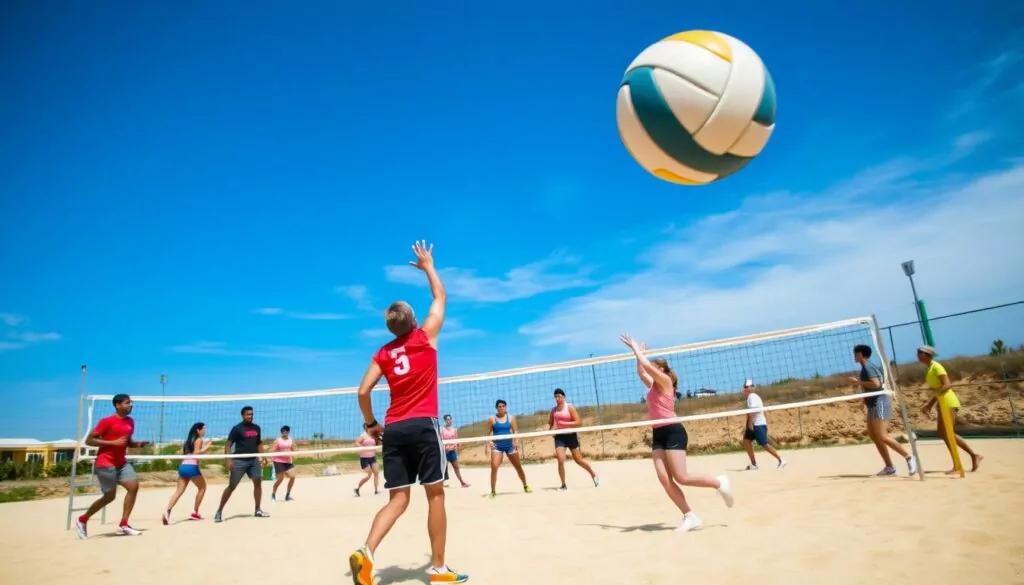I still remember the thrill of my first volleyball spike. The satisfying smack of the ball against my palm, the surge of adrenaline as it soared over the net, and the chorus of cheers from my teammates. That moment ignited my passion for the sport, but it also made me realize how much I had to learn. Over the years, I’ve discovered that the key to mastering volleyball lies in dedicated practice and the right drills.
Whether you’re a beginner looking to improve your passing or an experienced player aiming to perfect your serve, the best volleyball drills can transform your game. I’ve spent countless hours honing my skills through serving drills, passing drills, and spiking drills, and I’m excited to share what I’ve learned with you.
In this guide, I’ll take you through the essential volleyball drills that have helped me and countless others elevate their play. From fundamental techniques to advanced strategies, we’ll explore a range of exercises designed to boost your performance on the court. So, lace up your shoes, grab a ball, and let’s dive into the world of volleyball skill development together!
Key Takeaways
- Consistent practice with targeted drills is crucial for skill improvement
- A mix of serving, passing, and spiking drills creates a well-rounded player
- Drills can be adapted for different skill levels and goals
- Regular drilling enhances muscle memory and on-court performance
- Combining individual and team drills maximizes overall game improvement
Why Practicing Drills is Important for Improvement

Practicing drills is crucial for volleyball improvement. I’ve seen firsthand how regular drill work can transform a player’s skills and confidence on the court. From defensive drills to team drills and conditioning drills, each type plays a vital role in developing well-rounded athletes.
Understanding Skill Levels and Goals
As a coach, I always start by assessing each player’s current abilities. This helps me tailor drills to their specific needs. For beginners, I focus on basic passing and serving drills. Advanced players benefit from more complex team drills that simulate game scenarios.
The Benefits of Consistency
Consistency is key in volleyball training. Regular practice of defensive drills improves reaction time and positioning. Team drills enhance communication and coordination. Conditioning drills boost stamina and agility. I’ve noticed that players who commit to consistent drill work show the most significant improvements over time.
Mental Fortitude in Drills
Drills do more than just physical training. They build mental toughness too. Repetitive exercises like serving drills teach focus and patience. High-intensity team drills under pressure situations develop resilience. This mental fortitude often makes the difference in tight game situations.
| Drill Type | Physical Benefit | Mental Benefit |
|---|---|---|
| Defensive Drills | Improved reaction time | Enhanced anticipation |
| Team Drills | Better coordination | Improved communication |
| Conditioning Drills | Increased stamina | Greater mental endurance |
By understanding these aspects of drill practice, players can maximize their training and see real improvements in their game performance.
Key Volleyball Drills I Recommend

I’ve found that incorporating a mix of agility drills, warm-up drills, and game-like drills is crucial for volleyball success. Let’s dive into some key exercises I swear by for skill development.
Passing Drills for Accuracy
To improve passing, I love the wall passing drill. Stand about 10 feet from a wall and pass the ball against it, focusing on control and form. Start with 50 consecutive passes, gradually increasing the distance as you improve.
Serving Drills to Improve Technique
For serving, I recommend the target practice drill. Set up targets on the opposite court and aim to hit them. This game-like drill sharpens your accuracy and helps you master different serve types.
Setting Drills to Enhance Timing
The rapid-fire setting drill is my go-to for improving timing. Have a partner toss balls quickly while you set them to a target. This drill boosts your reaction time and precision.
Hitting Drills for Power and Precision
To enhance hitting, I use the approach and hit drill. Practice your approach, timing, and arm swing without a ball first. Then, add the ball and focus on hitting specific zones on the court. This drill combines elements of warm-up drills and game-like scenarios.
Remember, consistency is key. Incorporate these drills into your regular practice routine to see significant improvements in your volleyball skills.
Creating a Balanced Practice Routine
I’ve found that a well-rounded practice routine is key to improving volleyball skills. By mixing up drills, I keep my training fresh and target all areas of my game. Let’s dive into how I structure my sessions for the best results.
Structuring My Practice Sessions
I start each practice with a warm-up that includes agility drills. These get my blood pumping and improve my footwork. Next, I focus on the best volleyball drills for my current skill level. I might work on passing accuracy one day and serving technique the next.
Mixing Drills for Comprehensive Training
To avoid boredom, I combine different types of drills in each session. I might pair conditioning drills with setting exercises or mix hitting practice with defensive moves. This approach helps me develop a well-rounded skill set and keeps me engaged throughout the session.
Tracking Progress and Adapting Drills
I keep a log of my performance in each drill. This helps me see where I’m improving and where I need more work. When I notice progress slowing down in an area, I switch up my drills or increase their difficulty. This constant adaptation ensures I’m always challenging myself and moving forward in my volleyball journey.
